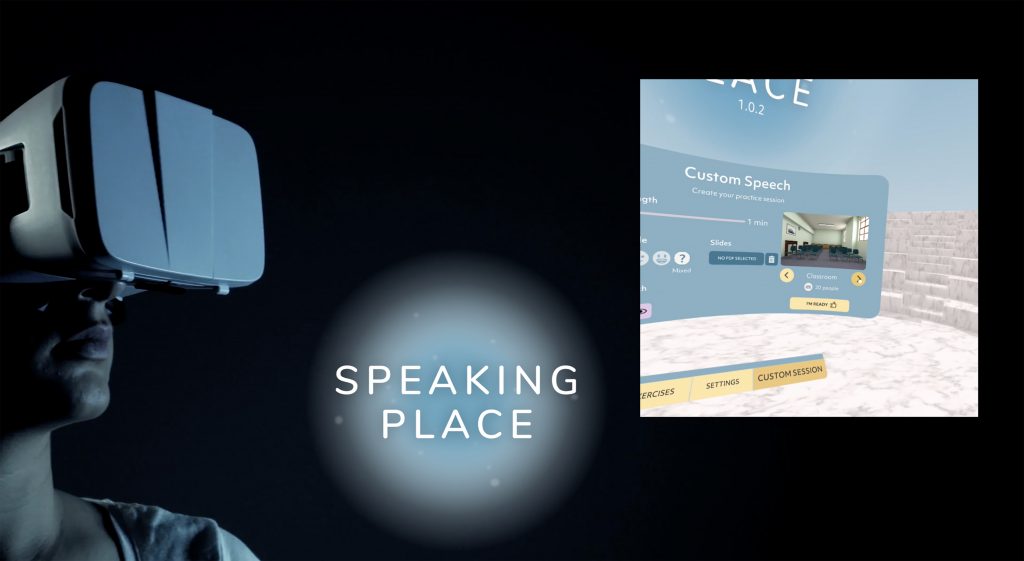Speaking Place – Immersive sound for VR therapy

BETTER SOUND 2020 | Categories: 1. Product, 3.2 Health
Entrant
Lexter Ljuddesign AB
Abstract
“Speaking Place” is an evidence-based Virtual Reality app, making it possible for anyone to practice public speaking in front of a virtual audience, either in therapy or in professional training. With designed, realistic audio environments, “Speaking Place” gives the user a very credible, immersive experience.
Description
Speech anxiety is a common social problem. For some people, this causes a lot of suffering and can in some cases be life-preventing where the affected person fully avoids these types of activities. “Speaking Place” is a Virtual Reality app, making it possible for anyone to practice speeches in front of a virtual audience. “Speaking Place” can be used as a practice tool before a specific presentation, to become a better speaker in general, as a self-help for fear of public speaking or as a practice tool within CBT (cognitive behavioural therapy).
“Speaking Place” was developed by Stockholm-based company Mimerse in collaboration with leading psychologists, researchers, lecturers and Lexter Sound Design as audio partner.
The virtual reality environments have been designed to give as authentic response as possible, as the (therapeutic) effectiveness of a VR simulation is highly dependent on its level of immersion. In order to achieve full immersion, audio is just as important as the graphics. If your ears tell you something else than your eyes, you simply don’t feel entirely there. Without realistic sound, the immersion isn’t believable.
Lexter Sound Design was tasked with designing realistic sound environments for Speaking Place. This included acoustics, background noise, audience reactions and foley. No special effects, no music, just life-like sound. The app gives the user the possibility to choose between different types of audiences and 6 different sizes of spaces. For each of the spaces we meticulously recorded human reaction sounds using multiple voice actors: Laughter, booing, gasping etc. We also recorded intermittent human sounds such as clothes and chair movement, murmur, coughing etc. These sounds were catalogued and localized individually in each spatial environment, meaning that every cough can be heard coming from an individual character.
Another important aspect was to design realistic background noise, i.e. the sound of “silence”. Ventilation systems, outside traffic, the hum of electric lights etc. This became increasingly more difficult in the larger spaces. What does a giant indoor arena filled with 20,000 spectators sound like when everyone is quiet? The third step was to design life-like acoustics for each room. By considering surfaces and room dimensions we programmed reverb simulations for each space, through which all sounds were processed. The further away a sound source is from the user, the less direct sound and the more reflected sound is heard.